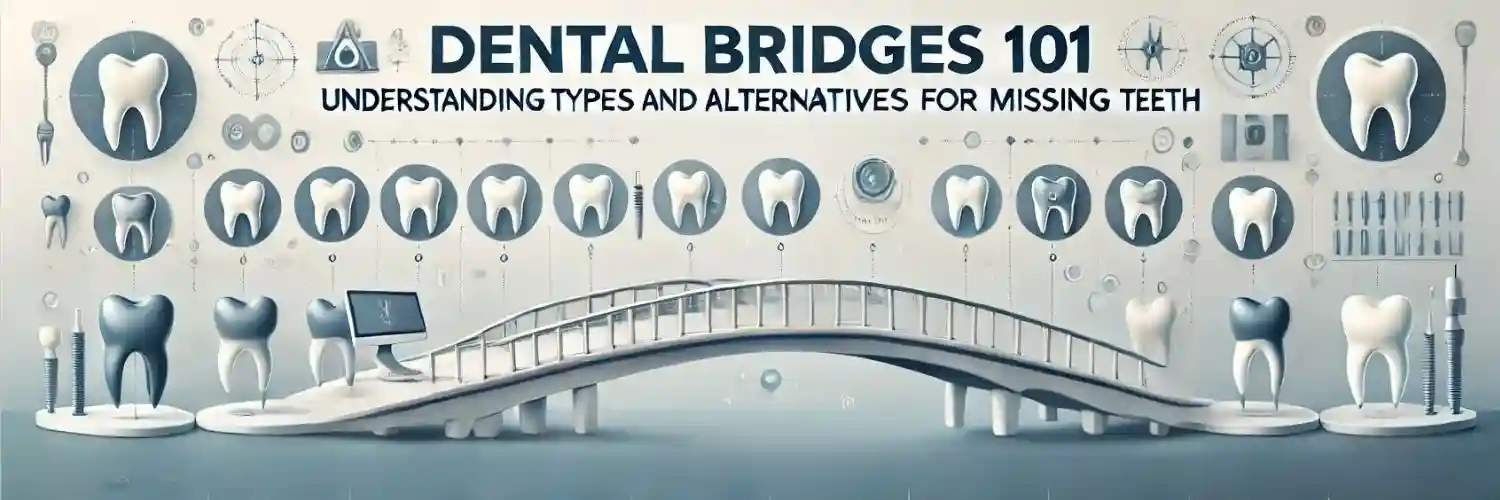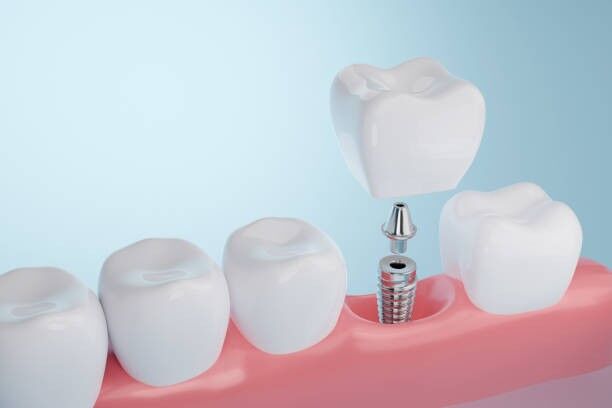Physical Address
304 North Cardinal St.
Dorchester Center, MA 02124
Physical Address
304 North Cardinal St.
Dorchester Center, MA 02124

Rewrite the content and keep the original meaning and format, and add 5 more H2, the content is “
Missing teeth can impact more than just your smile—they can affect your ability to chew, speak clearly, and maintain proper bite alignment. Dental bridges are a time-tested solution designed to fill the gap left by one or more missing teeth, restoring both function and aesthetics. By anchoring an artificial tooth (or teeth) to adjacent natural teeth or dental implants, bridges offer a fixed, reliable way to bring back a full and confident smile.
In addition to improving appearance, dental bridges help maintain facial structure, prevent remaining teeth from shifting, and support clearer speech and comfortable eating. For many patients, bridges offer a convenient and less invasive alternative to surgery while delivering long-lasting results.
With advancements in materials and techniques, there are now various types of dental bridges, including traditional bridges, cantilever bridges, Maryland bridges, implant-supported bridges, and full arch bridges. Each type is suited for specific clinical situations and patient needs.
In this blog, we’ll break down the most common bridge types and explore how they compare with dental bridge alternatives like implants or removable dentures. Whether you’re considering a zirconia bridge for its aesthetics or weighing the pros and cons of bridge vs implant, this guide will help you make an informed decision toward restoring your oral health and confidence.

Dental bridges come in various forms, each designed to suit different levels of tooth loss, bite forces, and patient preferences. Choosing the right type depends on your oral condition, the location of missing teeth, and whether you prefer a non-surgical or implant-based solution.
The most commonly used type, traditional bridges consist of one or more artificial teeth (pontics) held in place by dental crowns cemented onto the natural teeth on both sides of the gap. When there are healthy, robust teeth on either side, they work well.
Cantilever Bridge
Although it is only secured on one side, a cantilever bridge resembles a conventional bridge. It’s used when only one adjacent tooth is available. While effective in limited situations, it may put more strain on the supporting tooth.
Also known as a resin-bonded bridge, the Maryland bridge uses a metal or ceramic framework bonded to the backs of adjacent teeth. It requires minimal alteration to natural teeth and is often used for front tooth replacements.
Dental implants, as opposed to natural teeth, support an implant bridge. It’s an excellent solution when multiple teeth are missing in a row and the surrounding teeth aren’t strong enough to support a traditional bridge.
A full arch bridge, typically supported by four to six implants, replaces every tooth in the upper or lower jaw. This is a stable, permanent alternative to dentures for complete tooth loss.
No matter the type, zirconia bridges offer exceptional strength, biocompatibility, and natural-looking aesthetics, making them a popular choice for both anterior and posterior restorations.
Understanding these options helps tailor the best bridge solution for long-term function, comfort, and aesthetics.

Fixed bridgework offers a dependable and time-efficient solution for patients seeking to replace missing teeth without undergoing surgery. As the name suggests, these restorations are permanently cemented in place, providing excellent stability, natural function, and a seamless appearance.
Restoring full chewing function and speaking clarity is one of the main advantages of permanent bridges. Unlike removable dentures, fixed bridges stay securely in place, allowing patients to eat, talk, and smile with confidence. With materials like zirconia, fixed bridges can also achieve a highly natural look that blends beautifully with surrounding teeth.
Another key advantage is the shorter treatment time when compared to implant-supported solutions. While dental implants require surgical placement and healing over several months, fixed bridges can typically be completed in just a few dental visits—making them ideal for patients seeking faster results.
Fixed bridgework is also a suitable alternative for individuals who are not candidates for implant surgery due to medical conditions, insufficient bone density, or personal preference. In such cases, a traditional or cantilever bridge supported by adjacent teeth can effectively restore both aesthetics and function.
Overall, fixed bridges remain a reliable, non-surgical option that delivers lasting comfort and confidence—especially for patients looking for a minimally invasive way to replace missing teeth.

When deciding between a dental bridge and a dental implant, understanding their key differences is essential for making the right choice based on health, budget, and long-term goals.
A bridge is a non-surgical solution that uses adjacent teeth to support a prosthetic tooth. It’s quicker to complete—often in 2–3 weeks—and is ideal for patients who want to avoid surgery or who lack sufficient bone for implants. However, traditional bridges require the reshaping of healthy neighboring teeth, which can compromise their long-term integrity.
In contrast, a dental implant is a surgical procedure that replaces the missing tooth root with a titanium post. It preserves the surrounding teeth and helps maintain bone density, offering superior longevity—often lasting 20 years or more with proper care. However, implants typically require a longer treatment timeline and higher upfront cost.
When deciding between a bridge vs implant, consider:
Each case is unique, so your dentist can help you evaluate which option aligns best with your oral health and lifestyle goals.
|
Criteria |
Dental Bridge |
Dental Implant |
|
Procedure Type |
Non-surgical |
Surgical (requires implant placement) |
|
Support Mechanism |
Anchored to adjacent natural teeth |
Anchored directly to jawbone (acts as tooth root) |
|
Preservation of Adjacent Teeth |
Requires reshaping of neighboring teeth |
No impact on adjacent teeth |
|
Bone Preservation |
Does not prevent bone loss |
Helps maintain jawbone structure |
|
Aesthetics |
Good, especially with zirconia or ceramic |
Excellent, highly natural look |
|
Durability / Lifespan |
10–15 years with care |
20+ years with proper maintenance |
|
Treatment Time |
2–3 weeks (quicker) |
3–6 months (includes healing period) |
|
Cost (Initial Investment) |
Lower upfront cost |
Higher upfront cost |
|
Eligibility |
Suitable for most patients |
Requires sufficient bone and overall health |
|
Best For |
Quick, non-surgical replacement |
Long-term solution with minimal maintenance |
While dental bridges are a popular choice for replacing missing teeth, they aren’t the only solution. Depending on your oral health, budget, and long-term goals, several dental bridge alternatives may offer better outcomes for certain patients.
One common alternative is a removable partial denture, which replaces one or more missing teeth using a gum-colored acrylic base and metal framework. These are more affordable and non-invasive but may lack the stability and comfort of fixed options. They require daily removal and can sometimes cause pressure on remaining teeth over time.
For those seeking a more permanent and functional solution, implant-supported restorations—either partial or full arch bridges—offer excellent durability and aesthetics. These are anchored to dental implants placed in the jawbone, making them incredibly stable and bone-preserving. A full arch bridge, supported by 4–6 implants, is an ideal solution for complete tooth loss and offers an alternative to traditional dentures.
The best option depends on several factors:
A comprehensive dental evaluation will help determine which option—be it a zirconia bridge, implant bridge, or removable denture—is best suited to restore your smile effectively.
Replacing missing teeth is essential not just for aesthetics, but for maintaining proper function, bite alignment, and oral health. From traditional bridges and Maryland bridges to advanced options like implant bridges and full arch restorations, there are numerous solutions tailored to different clinical and lifestyle needs.
Each type of restoration—whether a cantilever bridge for a single missing tooth or a zirconia bridge for enhanced strength and beauty—offers unique advantages. For some, removable dentures may be a practical choice, while others may benefit more from long-lasting implant-supported alternatives.
Ultimately, the best solution depends on factors like your oral condition, bone health, budget, and personal preferences. A detailed consultation with your dentist will help evaluate the pros and cons of each option and recommend the most suitable treatment plan.
No matter the choice, investing in a quality restoration—be it a Maryland bridge, zirconia bridge, or implant bridge—can significantly improve your chewing function, confidence, and overall oral health, helping you smile comfortably for years to come.
”